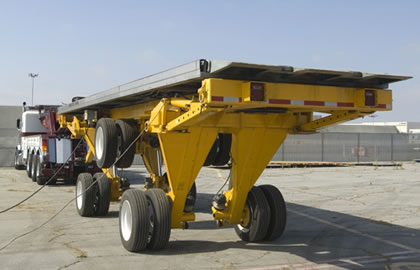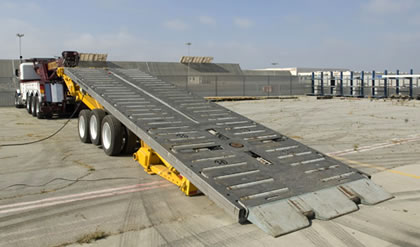
The U.S. Army is evaluating the Recovery Trailer System (RTS) designed by Michigan based AES as art of technical demonstrations and operational utility assessments in transportation, recovery and evacuation, and logistics distribution. The MRAP-RTS is part of a family of JRaDS variants designed to expedite cargo handling, logistics and distribution, and the evacuation and recovery of hard-to-move vehicles and aircraft weighing up to 80,000 pounds. The system uses two high-powered winches to pull vehicles onto a tilted trailer bed so they can be transported to a safe location for repairs. The alternative solution requires a heavy crane and a separate trailer to transport damaged vehicles.

In June 09 the Marine Corps awarded the Boeing Company a $5.2 million contract to demonstrate e a solution for recovering disabled Mine Resistant Ambush Protected (MRAP) vehicles from hostile areas. Boeing and teammate AES will build four Joint Recovery and Distribution System MRAP-Recovery Trailer Systems (JRaDS MRAP-RTS) for functional testing and operational certification. Following these evaluations the contract is expected to transition to production. The trailers are scheduled to be delivered in the fourth quarter of 2009 for two months of testing before transitioning to the U.S. Army under the JRaDS Joint Capability Technology Demonstration program.
“Every minute taken to extract damaged vehicles puts people at risk,” said Andy Garcia, JRaDS program manager for Boeing. “We’re trying to minimize that risk and get people out of harm’s way as soon as possible.” “The JRaDS MRAP-RTS reduces the amount of equipment, number of people and time it currently takes to evacuate and recover damaged MRAP vehicles,” said Dan Afflick, director of Ground Forces Support Solutions for Boeing. “The commonality of parts within the JRaDS family and with the customer’s fielded vehicles also will reduce logistics costs for the customer.”




















